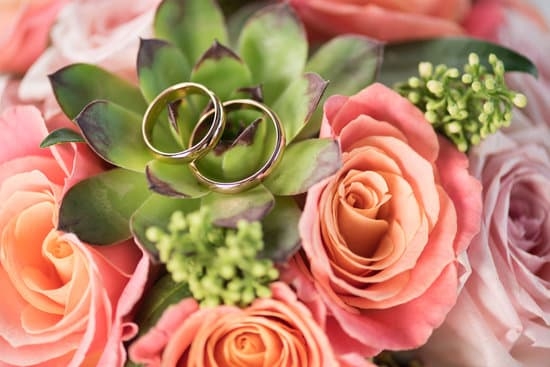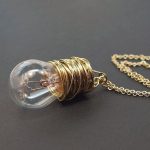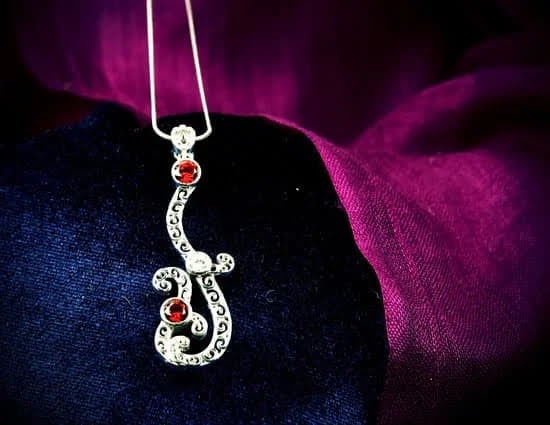The history of women’s choker jewelry is a fascinating journey that spans across various cultures and time periods, reflecting the ever-changing trends in fashion. Choker jewelry, a type of necklace worn snugly around the neck, has been an iconic accessory for centuries, symbolizing different meanings and styles throughout history. From its ancient origins to its modern resurgence, the significance of choker jewelry in women’s fashion has remained enduring.
Choker jewelry holds a significant place in women’s fashion as a versatile and timeless accessory. It has been worn by women from different social classes and cultural backgrounds, making it a universal form of adornment. The history of chokers reflects the evolution of women’s fashion and societal norms, showcasing the changing roles and perceptions of women throughout the ages.
As we delve into the history of women’s choker jewelry, we will explore its origins in ancient civilizations and cultures, its symbolism and meaning in different societies, as well as its influence on contemporary fashion trends. By examining famous women who have adorned themselves with chokers and understanding the various styles and materials used in their creation, we can gain a deeper appreciation for the enduring appeal of this accessory in women’s fashion.
Origin of Choker Jewelry
The history of women’s choker jewelry can be traced back to ancient civilizations and cultures, where it held great significance and was worn for various reasons. The choker necklace has been a staple of women’s fashion for centuries, with its origins stretching back to ancient civilizations such as the Sumerians, Egyptians, and Greeks.
Ancient Civilizations
In ancient Sumerian culture, chokers were worn by both men and women as a symbol of status and wealth. The wealthy often adorned themselves with lavish chokers made of gold and precious stones. In Egyptian culture, choker necklaces were not only worn as decorative jewelry but also had symbolic meaning.
They were believed to provide protection and were commonly worn by both men and women. Meanwhile, in Greek civilization, women wore leather chokers as a way to adorn their necks and highlight their beauty.
Asian Cultures
In Asian cultures such as China and India, choker necklaces have been a traditional accessory for centuries. In India, they are known as “gulband” or “chik,” and are worn by both married and unmarried women as a symbol of femininity and grace. Chinese culture also embraced choker necklaces as a symbol of beauty and elegance.
The origin of choker jewelry in ancient civilizations and cultures provides insight into its significance in women’s fashion throughout history. From representing wealth to serving protective or ornamental purposes, the choker necklace has been an enduring accessory that has evolved across different cultures over time.
Evolution of Choker Jewelry
The history of women’s choker jewelry can be traced back to the Victorian era, where it was a popular fashion accessory among the elite. During this time, chokers were made from luxurious materials such as velvet, lace, and precious stones, and were often worn as a symbol of wealth and status. The tight-fitting necklace became synonymous with the fashion of the time, with women adorning their necks with intricate designs and embellishments.
As fashion evolved throughout the 20th century, choker jewelry saw a resurgence in popularity during the 1990s. This trend was influenced by pop culture icons such as Madonna and Princess Diana, who were often seen wearing stylish chokers. The 90s fashion movement embraced the grunge and punk aesthetics, leading to a surge in popularity for tattoo chokers and black leather styles.
In contemporary times, choker jewelry continues to be a staple in women’s fashion, with an array of styles and materials available to suit different tastes. Designers have reimagined the classic choker by incorporating modern elements such as geometric shapes, minimalist designs, and sustainable materials. From sleek metal bands to bohemian-inspired beaded creations, there is a choker style for every occasion.
Famous celebrities like Rihanna and Kendall Jenner have been spotted wearing choker jewelry on red carpets and at high-profile events, further solidifying its place as a timeless accessory. With its rich history and ability to adapt to ever-changing fashion trends, the choker remains an enduring piece in women’s jewelry collections.
| Choker Jewelry Styles | Materials Used |
|---|---|
| Tattoo Chokers | Velvet |
| Metal Bands | Lace |
| Beaded Creations | Precious Stones |
Symbolism and Meaning Behind Choker Jewelry in Different Cultures
Choker jewelry has been worn by women in various cultures throughout history, each with its own unique symbolism and meaning. The significance of choker jewelry goes beyond fashion, as it often reflects the values, beliefs, and traditions of a particular culture.
Ancient Civilizations
In ancient civilizations such as Egypt and Mesopotamia, choker jewelry was worn as a symbol of status and wealth. It was also believed to provide protection and ward off evil spirits. In some cultures, chokers were adorned with specific gemstones or charms that held spiritual significance. For example, the ancient Greeks wore chokers adorned with amulets to symbolize their devotion to particular gods.
Indigenous Cultures
In indigenous cultures around the world, choker jewelry holds great cultural and spiritual significance. For instance, Native American tribes use chokers as a form of storytelling, with each bead and symbol representing a specific aspect of their tribal history and traditions. Similarly, African tribes use beaded chokers as a way to communicate social status, lineage, and even marital status within the community.
Middle Ages
During the Middle Ages in Europe, choker jewelry took on religious symbolism. It was common for women to wear simple black velvet or ribbon chokers as a sign of mourning for the loss of a loved one or to show allegiance to a particular religious order. The symbolism behind choker jewelry in different cultures offers insight into its diverse meanings and its enduring presence throughout history.
These examples demonstrate the rich history of women’s choker jewelry across different cultures, highlighting its multifaceted significance beyond mere adornment.
Famous Women Who Have Worn Choker Jewelry Throughout History
Throughout history, choker jewelry has been worn by numerous famous women, further cementing its status as a timeless and iconic fashion accessory. From royalty to Hollywood stars, the choker has adorned the necks of influential women, leaving a lasting impact on fashion. Here are some notable figures who have contributed to the popularity of choker jewelry:
- Queen Victoria: During the Victorian era, Queen Victoria popularized the use of black ribbon chokers, setting a trend that would be followed by women of all social classes.
- Maria Felix: The Mexican actress and singer was known for her bold and extravagant style, often seen wearing elaborate gold and precious gemstone chokers.
- Princess Diana: Revered for her grace and elegance, Princess Diana often chose to accessorize her outfits with delicate pearl chokers, adding a touch of sophistication to her ensembles.
These women not only influenced fashion in their respective eras but also played a significant role in shaping the allure and versatility of choker jewelry.
From influential historical figures to modern-day celebrities, the appeal of choker jewelry has transcended time and continues to be an integral part of women’s fashion.
- Influences of Victorian Era
- Iconic Hollywood Actresses
- Royalty Throughout History
How Choker Jewelry Became a Popular Fashion Trend in Modern Times
Choker jewelry has been a fashion staple for centuries, but its popularity experienced a resurgence in modern times. The history of womens choker jewelry dates back to ancient civilizations and cultures, where it was worn for various symbolic and decorative purposes. However, it wasn’t until recent decades that chokers became a popular fashion trend embraced by women around the world.
The modern popularity of choker jewelry can be attributed to its association with various subcultures and influential figures. In the 1990s, choker necklaces became synonymous with the grunge and punk movements, as well as with popular teen idols such as the Spice Girls. This cultural phenomenon contributed to the widespread adoption of chokers as a fashionable accessory among young women.
In addition to subcultural influences, the rise of social media and celebrity endorsements also played a significant role in making choker jewelry a must-have fashion item. Celebrities like Rihanna, Kendall Jenner, and Gigi Hadid have been spotted wearing different styles of chokers, which has undoubtedly influenced their fans’ fashion choices. Furthermore, fashion influencers on platforms like Instagram have showcased creative ways to style chokers, further solidifying their status as a popular modern trend.
- The affordability and versatility of choker jewelry also contributed to its mass appeal:
- Chokers made from materials such as velvet, lace, or leather are affordable options for those looking to accessorize without breaking the bank.
- Additionally, the wide range of styles available – from classic velvet bands to statement metal designs – catered to diverse personal tastes and occasions.
- Fashion brands and designers began incorporating chokers into their collections:
- High-end designers created luxury versions of choker necklaces using precious metals and gemstones.
- Fast-fashion retailers offered an array of trendy chokers that appealed to younger consumers seeking budget-friendly accessories.
Different Styles and Materials Used in Choker Jewelry
Chokers have been a staple in women’s fashion for centuries, and the styles and materials used in creating these accessories have evolved over time. From ancient civilizations to the modern world, choker jewelry has taken on different forms, each reflecting the trends and cultural influences of its time.
In ancient civilizations like Egypt and Sumer, chokers were made of materials such as gold, beads, and gemstones. These chokers were often worn as symbols of status and wealth. In the Victorian era, chokers experienced a resurgence in popularity with the use of intricate lace, velvet, and pearls. The delicate designs of this period reflected the romanticism and elegance of the era.
Fast forward to modern times, choker jewelry has seen a revival with a wide range of materials being used. From leather and suede to metal chains and fabric, there is now a diverse array of options for women to choose from when it comes to choker jewelry. Additionally, contemporary designers have also incorporated elements such as charms, pendants, and embellishments into their choker designs to cater to varying fashion tastes.
The evolution of styles and materials in choker jewelry reflects not only changing fashion trends but also the shifting cultural attitudes towards women’s adornment. Today, chokers continue to be a popular choice for accessorizing various looks, proving that they are both timeless and versatile in their appeal.
| Styles | Materials |
|---|---|
| Ancient Civilizations: Gold, Beads | Egyptian cultures: Gold beads |
| Victorian Era: Lace, Pearls | Sumerian cultures: Gemstones |
| Modern Times: Leather, Metal Chains | Metal Chains: |
The Resurgence of Choker Jewelry in Contemporary Fashion Trends
Choker jewelry has experienced a resurgence in contemporary fashion trends, with many women incorporating this timeless accessory into their modern wardrobe. The history of womens choker jewelry is rich and dates back to ancient civilizations and cultures. From its origins to the present day, choker jewelry has evolved and adapted to different fashion trends while maintaining its enduring appeal.
In recent years, choker jewelry has made a comeback on fashion runways and red carpets, becoming a staple accessory for many celebrities and influencers. This resurgence can be attributed to the cyclical nature of fashion, as trends from the past are often revisited and reinterpreted for modern audiences. Additionally, the rise of social media has played a significant role in popularizing choker jewelry, with influencers and style icons showcasing various ways to style and wear these pieces.
Contemporary fashion trends have also seen a diverse range of styles and materials used in choker jewelry. From delicate lace designs to bold metal statements, there is a choker style to suit every individual’s unique taste and aesthetic.
The versatility of choker jewelry allows it to be seamlessly integrated into different fashion looks, whether it’s for casual daytime wear or elegant evening ensembles. As the fashion industry continues to evolve, it is evident that the resurgence of choker jewelry will endure as a timeless addition to women’s fashion.
Famous women throughout history have influenced the popularity of chokers through their iconic style choices. From Queen Victoria’s regal pearl chokers to the grunge-inspired looks of 1990s supermodels, these influential figures have left an indelible mark on the cultural significance of choker jewelry.
Whether worn as a symbol of power, rebellion, or femininity, the symbolism behind choker jewelry varies across different cultures and time periods. The resurgence of this classic accessory in contemporary fashion serves as a testament to its enduring appeal despite ever-changing trends.
Conclusion
In conclusion, the history of women’s choker jewelry is a fascinating journey that spans centuries and cultures. From its origins in ancient civilizations to its resurgence in modern fashion trends, the choker has maintained its enduring appeal in women’s fashion. The significance of choker jewelry in women’s fashion cannot be understated, as it has been worn by famous women throughout history and continues to be a staple accessory for many women today.
The symbolism and meaning behind choker jewelry vary across different cultures, adding to its diverse and rich history. Whether it is a symbol of wealth and status or a statement of rebellion and empowerment, the choker has always been a powerful expression of personal style and individuality. Its evolution from the Victorian era to the present day has seen various styles and materials being used to create unique and stunning designs.
With its ability to adapt to ever-changing fashion trends, choker jewelry remains an iconic accessory that never goes out of style. Its resurgence in contemporary fashion trends proves that this timeless piece will continue to captivate the hearts of women for years to come.
As we look back on the history of women’s choker jewelry, it becomes clear that this accessory is not just a fashion statement, but also a reflection of the strength and beauty of women throughout history.
Frequently Asked Questions
What Does a Woman Wearing a Choker Represent?
A woman wearing a choker can represent many things, depending on cultural and personal significance. In modern fashion, it can be seen as a bold and stylish accessory, while historically it has been associated with different meanings such as power, femininity, or even rebellion.
What Is the History of Women’s Chokers?
The history of women’s chokers dates back centuries, with origins traced to cultures like Ancient Egypt, where they were worn as a symbol of royalty and wealth. Chokers also gained popularity during the 1800s Victorian era before resurfacing in the 1990s grunge fashion movement.
What Is the Meaning of Chokers?
The meaning of chokers varies across different contexts. In some cultures or historical periods, they represent status or power. For others, wearing a choker is about celebrating femininity or expressing personal style. Ultimately, the meaning of a choker is subjective and can change over time and across cultures.

Welcome to my jewelry blog! My name is Sarah and I am the owner of this blog.
I love making jewelry and sharing my creations with others.
So whether you’re someone who loves wearing jewelry yourself or simply enjoys learning about it, be sure to check out my blog for insightful posts on everything related to this exciting topic!





